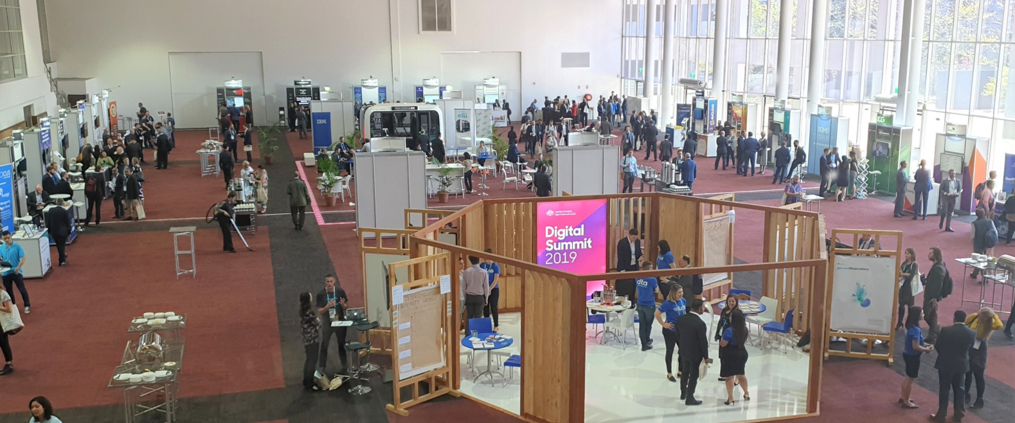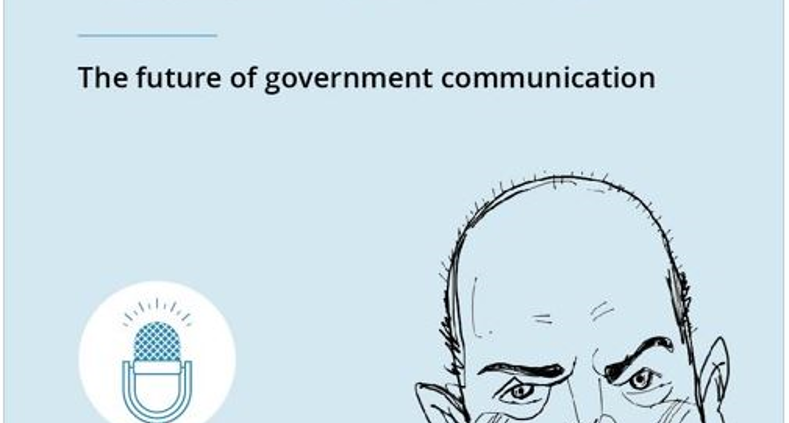Reflections on the first Digital Transformation Summit by Jen Riley, CIO at Clear Horizon
I arrived 2 hours late to the Digital Transformation Summit in Canberra because something had gone wrong with Microsoft which caused havoc with aviation booking systems. The incident was a salient reminder of how dependent we are on technology. The embracing of digital transformation is well underway in our Federal and State Governments according to all the t-shirts, slogans and senior government bureaucrats that used the inaugural summit to demonstrate how well government is embracing the 4th industrial revolution.
The message was hopeful. We will digitalise. We will automate. We will be client-centred and provide a more personalised intuitive experience for citizens. Citizens will be able to self-serve and have the same seamless experience we have learnt to expect from the business sector, and if you live in Queensland, this will be delivered by the first digital staff member ‘Russell’. Government representatives were quick to add though that this did not mean everything would be delivered online rather restricted to that which can be automated and available through chat bots and the like will be made available to those with the capability and capacity to access digital options. Those with more complex cases or people without the capability or capacity to access information/services through the online medium would be able to access a person this multimodal or omnichannel approach has proven successful for the banks and Telcos.
What about those experiencing vulnerability? Will they be left behind? Renée Leon, Secretary of the Department of Human Services, cited the example of remote Aboriginal communities being one of the biggest users of Department of Human Services online services who would normally have to drive 100s of kilometres to process Medicare claims.
But the single biggest question from the (mostly government) audience was in relation to how to deal with resistance from staff/management experiencing digital transformation, indicating that the change management within government is not smooth sailing. Ron Gauci, CEO of the Australian Information Industry Association challenged the term resistance and argued what most people found was more likened to intimidation and reluctance – who wants to be shown up as a luddite? Half of the workforce is digitally savvy, they had the internet at school, learnt about programming, the other half (i.e. everyone over 40, myself included) did not grow up in a tech environment, we all remember posting letters, using index cards (they had a use before Agile) in libraries and handwriting essays. The massive upskilling required was a key theme throughout the day and the Digital Transformation Agency capability building projects are to be applauded. But as Renee Leon pointed out, citizen expectations of technology and the speed of technological change is far surpassing the capability of non-technical people in government.
Dr Julia Powles, Associate Professor of Law and Technology, University of Western Australia, warned of the ‘shiny object syndrome’ and ‘deferential’ treatment of technologies such as Artificial Intelligence (AI), Machine Learning (ML) and data analytics. She also cautioned the audience to be weary of vendors over selling and under delivering. There are a lot of white horses and unicorns running around offering all sorts of magical solutions that will solve all our needs and automate everything – when has a digital solution resulted in less work, someone, somewhere, is doing a lot tagging and scraping. Powles also reminded us of the diversity of human experience and the real danger of that being flattened with pattern recognition and aggregated user mapping experiences.
The session on AI and ML was a little underwhelming but showcased the variety of AI applications such as predictive modelling on who wasn’t going to pay their land tax, Olli the South Australian Autonomous Car and the application of Machine Learning in the Human Rights Commission record processing. Olli was fun looked a bit like a large toaster and I loved that it was addressing the first mile/last mile issue of public transport and supporting the elderly and disabled to get out of the home more. It still is really early days for the AI, ML world and there were lots of questions about ethics, who makes the decisions about the algorithms, how will these opaque decision-making processes be accountable, with few answers coming at the moment.
An interesting panel was on data sharing – an incredibly vexed issue for government. Government is committed to the privacy of individual data and grappling with the issue of informed consent and they want to share and consolidate data to make better policy decisions for the common good. Currently, all data requests between and within departments are considered on a case by case basis. Philip Gould, Assistant Secretary, Office of the National Data Commissioner expressed that releasing data is not a check box activity but rather, a subjective assessment about the implications of sharing and joining data. Data has immense value, but it’s a high stakes game – it’s not just the ‘insurance company’ worry, it’s items such as the location of endangered species.
What I did love about yesterday was walking the walls of ‘life events’, where GovX have mapped citizens experience with government services across the life events of ‘birth of a child’ to ‘finding a job’ and dealing with the death of a loved one. The voice of community has been amplified on real pain points:
– Lack of proactive engagement.
– Inconsistent and inaccessible content.
– No single source of truth across government.
– Not meeting service delivery expectations.
This is exciting. Digital systems are fallible, as anyone on a plane experienced yesterday. However, an obsession with people’s genuine challenges with services and elevating their experience as central to addressing those challenges, is the true transformation.




